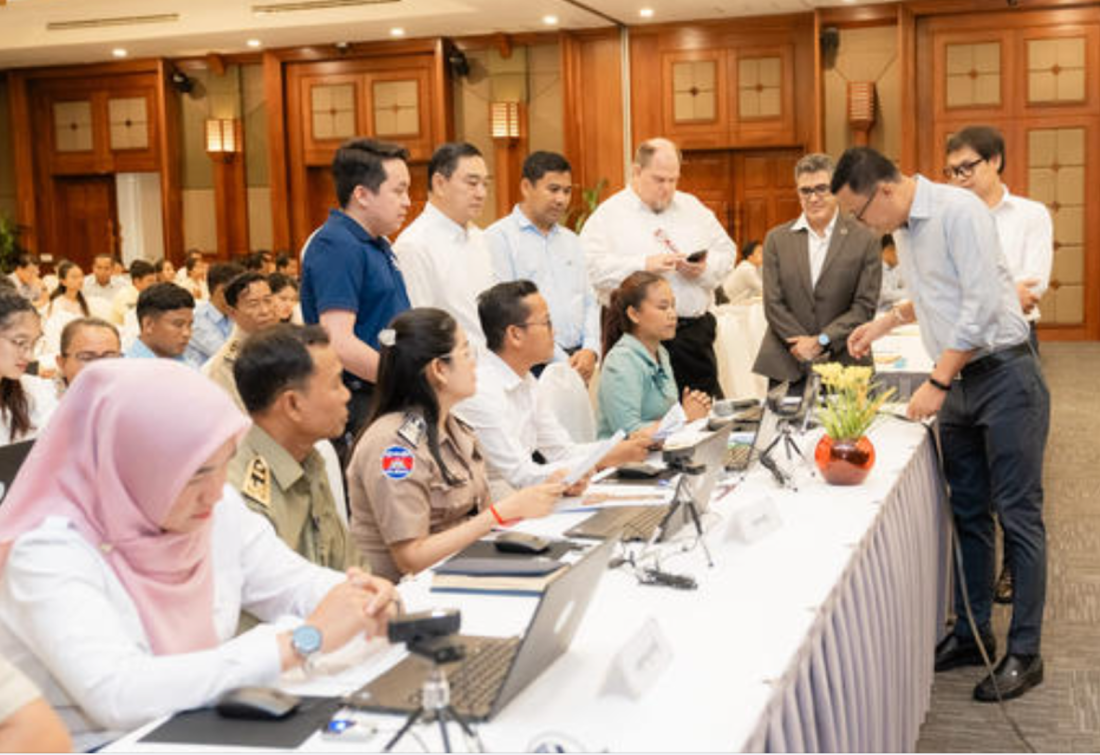Navigating the System: How a Central Registry in Cambodia Helps Patients Access Social Services
Date
By Michael Stahl
In pursuit of universal health coverage, Cambodia is committed to improving access to health care for its citizens, but its many siloed social health protection programs pose formidable challenges for clients and program managers alike. On the positive, programs range from covering formal sector workers and poor households, to insurance schemes for HIV patients and more. Unfortunately, each program has its own eligibility requirements and registration processes for enrollment. Even after figuring out which program to sign up for, most people still do not know where to find the desired health services, or how their medical expenses will be covered.
Navigating these programs is equally complex for health care managers and providers. Without linkages between programs, the burden falls on them to search various databases and determine how each patient can be covered and where they should go to receive care. Those managing separate health protection programs may inadvertently duplicate efforts because they lack information about the same individual appearing on both rosters.
The ‘digital glue’
To alleviate this burden and facilitate eligible enrollment in social service benefits, the USAID Local Health System Sustainability Project (LHSS) is working with programs such as the National Social Protection Council, the IDPoor Program, and the National Social Assistance Fund to create a data-sharing infrastructure that links social health protection programs across the country.
At the heart of this information-sharing system will be a user-friendly central registry. Using demographic information, the registry will provide the ‘digital glue’ linking all social protection databases in the country, without sharing any personal medical information about clients. For the first time, clients and providers will be able to quickly get information about which services a person is eligible to receive, where to get those services, and what they will cost.
Creating a network with interoperable data management systems holds great potential to revolutionize Cambodia’s entire social safety-net ecosystem, providing improved efficiency for policymakers, implementing organizations, service providers, as well banks that subsidize services. System ‘interoperability’ can also foster a more integrated approach to healthcare delivery, ensuring patients receive timely and appropriate care. In time, these gains will directly translate into advancement toward universal health coverage for all citizens.

Heading
What is Cambodia learning about interoperability?
What is Cambodia learning about interoperability?
-
Information is currency. Those advocating for a data-sharing system must demonstrate how that system will help stakeholders achieve their own goals. Otherwise, intended users may be reluctant to share their information. It is also essential that stakeholders understand that digital interoperability does not mean sharing all data with everyone. Instead, it is about creating smart data linkages and sharing only crucial information needed to connect specific health programs or insurers.
- ‘Human interoperability’ is 80 percent of the work. Engaging stakeholders, creating a shared understanding of the need for a digital connectivity across the social health protection system, and reaching consensus on what that system will be, is a labor-intensive endeavor. Yet, bringing stakeholders around the table and facilitating agreement about a way forward is essential to improving access to health services and financial protection for all citizens.
- Smart sequencing is paramount. Using technology and achieving digitization may be among the final steps in a larger process which begins with careful political navigation and fostering agreement toward a shared goal of creating an interoperable social health protection system.
- The onus is on data specialists to ‘translate’ technological terms and process into policy and program concepts that decision-makers can readily understand, value, and then champion.
The road to equity in social health protection
By promoting interoperability and establishing a central social protection registry, the government is building a more robust, responsive, and equitable social health protection system that will bring universal health coverage within closer reach for all Cambodians.
